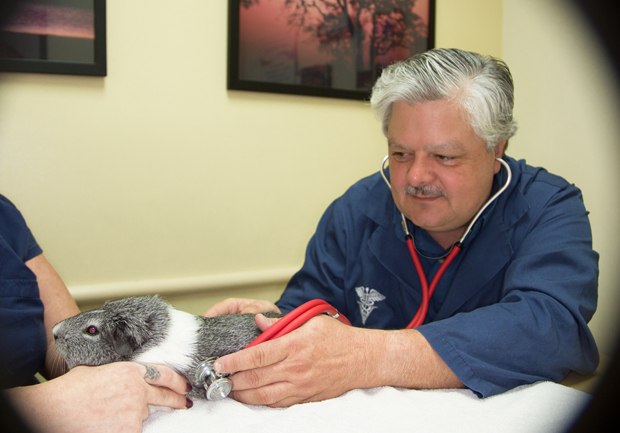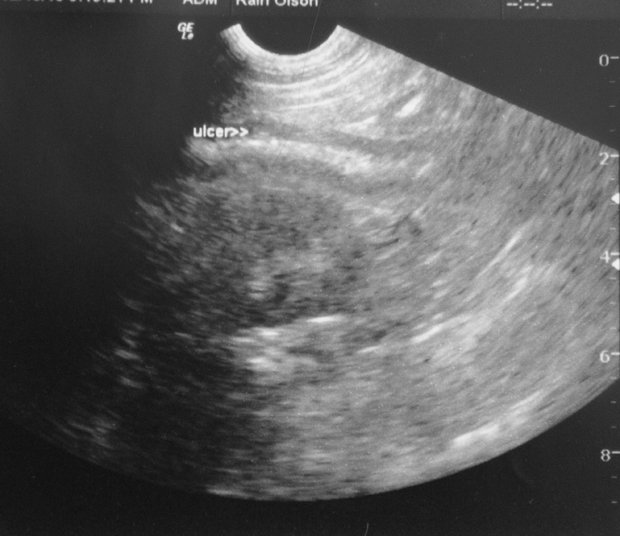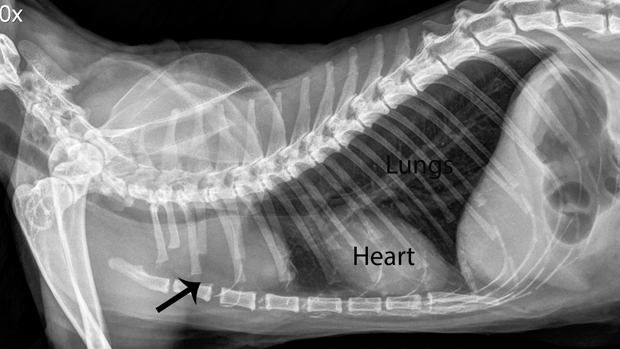It can be difficult to tell in older pets or those with chronic disease whether their quality of life is failing or poor and what pain, if any, they feel. Animals in pain can be stoic, feeling significant pain on the inside but showing few outwards signs of it.

Pets are masters at hiding illness. The first step in determining your pet’s quality of life, and before we run any diagnostic tests, is to perform a physical exam. This applies to all species, as you can see with this guinea pig. Photos courtesy of Long Beach Animal Hospital (LBAH).
Signs of pain in dogs include whining, panting and restlessness. They might also have poor appetites, sleep poorly, and be reluctant to go on walks or walk for shorter distances. Cats tend to get quiet, will hide, might not want to be petted, and will be reluctant to move.
If you feel your pet is in pain or you are concerned about its quality of life, there are several questions to ask yourself:
- Is your pet losing weight from a poor appetite? Are you able to assist-feed the pet without a struggle? Is this assist-feeding helping to maintain a normal body weight? Is a feeding tube temporarily needed to get over a problem that might resolve?
- Is your pet drinking well and maintaining proper hydration? Excessive drinking can be a sign of a disease, so monitor water intake if there has been change in your pet’s drinking habits. Does giving supplemental fluids under the skin or orally with a syringe help keep a normal hydration status, and are you willing and able to do this?
- Does your pet groom itself normally, or does it resist brushing? Are there pressure sores from lying on one area of its body for too long?
- Is your pet no longer responsive to the environment, happy to see you, and wanting to be around other pets in the house it has known for years?
- Is it able to move without assistance? Is it slow getting up after sleeping? When going for a walk, does it go slower or not as far?
- Does your pet have more bad days than good concerning any of these parameters? If that is the case, there is a quality of life issue that needs to be discussed with your veterinarian.

This pet was not eating well, a common sign of old age and a leading indicator of a poor quality of life. An ultrasound revealed the true reason it was not eating, which was an ulcer in the stomach. It was treated successfully, and this pet started eating well again. Without this test, we could have been misled and felt that this pet had a poor prognosis, when in reality it was a correctable problem.
Observing these parameters closely, comparing them to your pet’s behavior and bearing in previous years, and looking for trends will give you a good idea of your pet’s quality of life. These important observations in conjunction with a physical exam by a vet and routine diagnostic tests like blood panels and radiographs will be a big help in determining your pet’s quality of life. Only then will you be able to make an informed decision about your pet and take appropriate action.

This is the radiograph of an older pet that seemed fine at home except for the fact it was listless. A chest radiograph revealed a large mass (at the arrow) causing the problem. This would not have been detected without the radiograph, a very important diagnostic tool on our patients that cannot tell us how they feel.
To learn more about medical problems of animals please visit the following pages on our website:

